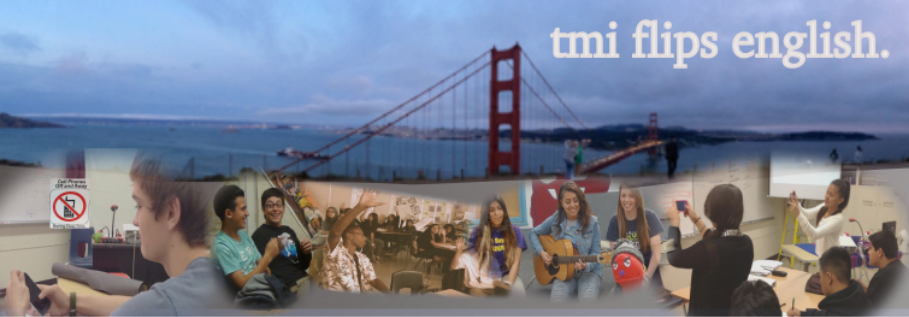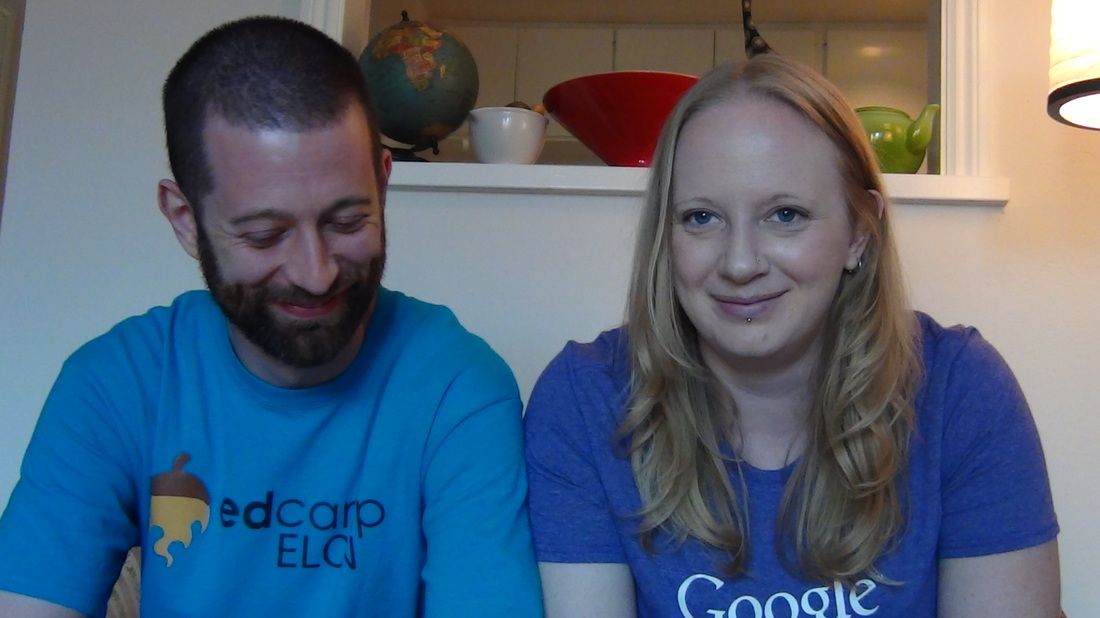I had a great conversation with Hannah Walden, a fellow English blogger and Connected Educator, where we discussed this question: Can you really flip your class if you don't use video for anything? Can you really flip without using technology?
My short answer: Yes. If you have the elements of the Flipped Mindset, you have flipped your class.
I know that the original definition (now referred to as Flip 101, or the Traditional Flip) included putting lecture on video, then having students watch it at home, and do what used to be homework in class with the assistance of their teacher.
But even the founders, Jon Bergmann and Aaron Sams, have moved away from promoting Flip 101. While they do include the use of video in their definition now, I think that the picture has to look different in the Humanities. That's where the Flipped Mindset came from - work done by a group of English and History teachers, with a rogue math teacher thrown in for good measure (Why? Because we like her!).
But in English there is little direct instruction that is suitable for video. I've written about Content vs. Process video before, and think that there is more potential in process videos for English than in content ones. But either way, the content is not as sequential as in a math or science class, so Flip 101 has to look different.
The areas that work for Flip 101 are where most English content videos are being made: grammar and writing. Neither are perfect fits, and often end up promoting pedagogy as bad as the lecture they replace. But it's where most teachers start, and that's important to have a starting point.
I do believe that you can flip without video. Especially if you teach English or History, where content videos are less useful.
*****
I said that was the short answer. Now, the long answer.
Would I flip without video?
No. For me personally, in my context, I would not give up that tool in my toolkit.
Video gives me the ability to do things I couldn't do before. And while I understand that I am in a more ideal situation than many, I think there are many reasons to try and incorporate video as a tool to execute the Flipped Mindset.
Let me build my case for you.
Note: I've separated these into shorter posts to make the entry shorter than a Dostoyevsky novel. Click on the link to be taken to that extended entry for that reason. There will be a link to bring you back here as well afterward.
1. Using video gave me a partnership that changed everything, both for me and my students.
2. Technology is the language of our students, and I can help them learn how to speak that language more effectively, with greater safety and skill.
3. The workplace and higher education are changing. We have to prepare our students in ways that we didn't have to be prepared. Technology is changing, and what we teach our students will shape how well they are able to adapt.
4. There is inherent buy-in for students in watching videos. Many of my students spend HOURS on YouTube every night, learning, laughing, interacting. They preferred my instruction on video, even when I showed it in class; sure, it's a blow to my pride as a lecturer, but if the choice is between my pride and my students' education, the choice isn't even a choice.
5. Using video allows you to customise students' education and allow them to self-pace more effectively. If a student can watch a video during class, then I have more ability to work with students who are trying to apply that knowledge. Having students at different points in the curriculum means that I can work with each student individually at the points they most need my help. Video helps me make the best possible use of my class time and makes my class more student-centred as well.
****
This is slightly schizophrenic post. It starts with the argument that you can flip without technology, and ends with an argument why you should flip WITH technology.
Because here's the big idea: if you have the Flipped Mindset, you have flipped your class.
Video is a tool I use TO flip my class because it is what is best for my students in my classroom. If I suddenly lost the ability to use video tomorrow, I'd miss it, but my class would still be flipped.
On Twitter, Hannah Walden asked what makes a class flipped if we don't use video, and my answer here is the same I said to her: the flip in Flipped Class is not flipping video or lessons, it is flipping responsibility from the teacher to the student for their learning. Some, like Hannah will argue that Flipped Mindset just produces a class in which student-centred pedagogy is dominant.
But the difference is in the combination: the focus is NOT just on making students more responsible for their own learning, but also at using class time in the best possible way, and doing higher-order thinking tasks. If you do all of those things but don't want to be called flipped, that's fine. (but I will still secretly count you amoung our ranks anyway)
And I think you'll find that nearly every flipped class teacher uses technology in some way, either in minor or significant ways. So the argument is one more of semantics than anything else. I only know of two flipped teachers who use little to no technology because of limitations of availability. I know a handful who flip without video. And I know many, many others who have flipped in all but name because they don't want to be associated with Khan Academy or any of the other misconceptions running wildly out there in the blogosphere.
And really, it's just a term. And it may not be perfect. Some who identify under it may even hate it. But it's what we've got, and since it's not going away any time soon, really, what's in a name?


 RSS Feed
RSS Feed
